Vastus lateralis muscle Anatomy, Origin, Insertion, Function, Exercises
Table of Contents
Introduction
- The vastus lateralis also known as the vastus externus, is the most significant & most powerful part of the quadriceps femoris, a muscle in the thigh. Together with other powers of the quadriceps muscle group, it extends the knee joint, moving the lower leg forward. It originates from a series of flat, broad tendons attached to the femur, & attaches to the outer border of the patella.
- It ultimately joins with the other muscles that construct the quadriceps in the quadriceps tendon, which travels over the knee to connect to the tibia. The vastus lateralis is the recommended site for intramuscular injection in infants less than 7 months old & those unable to walk, with loss of muscular tone.
Origin:
It originates from the:
- the upper aspect of the intertrochanteric line,
- the base of the greater trochanter and onto its anterior surface,
- from the proximal part of the lateral lip of the linea aspera,
- lateral intermuscular septum.
Insertion:
- It inserts into the lateral side of the quadriceps tendon, joining with rectus femoris, vastus medialis, & vastus intermedius muscles, enveloping the patella, then by the patellar ligament into the tibial tuberosity.
Structure
- The vastus lateralis muscle arises from several parts of the femur, including the upper part of the intertrochanteric line; the lower, anterior borders of the greater trochanter, & the outer border of the gluteal tuberosity, & the upper 1/2 of the outer border of the linea aspera. These form aponeurosis, a broad flat tendon that surfaces in the upper 3 -quarters of the muscle. From the inner area of the aponeurosis, many muscle fibers originate. Some additional fibers arise from the tendon of the gluteus maximus muscle, & from the septum between the vastus lateralis & short head of the biceps femoris muscle.
- The fibers form a large fleshy mass, attached to a 2nd strong aponeurosis, placed on the deep surface of the lower portion of the muscle. This lower aponeurosis becomes contracted & thickened into a flat tendon that attaches to the outer border of the patella, & subsequently joins with the quadriceps femoris tendon, enlarging the capsule of the knee joint.
Function
- The vastus lateralis muscle is the most significant & most powerful part of the quadriceps muscle in the thigh. Together with the other 3 powers of the quadriceps group, it extends the knee joint, moving the lower leg forward.
Relations
- The vastus lateralis muscle is located superficial to the biceps femoris muscle, from which it is separated by the lateral intermuscular septum. The lateral side of the vastus lateralis muscle is covered by the tensor fasciae lata & gluteus maximus. Its medial surface is related to the vastus intermedius, from which it is separated by the lateral femoral circumflex artery & branches of the femoral nerve.
Nerve supply:
- The Posterior of the femoral nerve (L3, L4) supplies the muscle.
Blood supply:
- The superior medial artery is a branch of the lateral circumflex femoral artery.
- The inferior medial artery is a branch of the artery of the quadriceps.
- The lateral artery is actually the first perforator of the deep femoral artery.
Assessment
Palpation
In supine:
- Place palpating hand distal to the greater trochanter
- Get the patient to actively & isometrically contract quadriceps
- Palpate the contracting muscle focusing on the lateral side to vastus lateralis
- Resume to palpate distally until the quadriceps tendon
Length Tension Testing / Stretching
Standing
- Stand on one leg & pull the other foot up behind the bottom
- Keep the knees together & push your hips forwards to increase the stretch
- Hold for between 10 to 30 seconds
Lying
- Lay on your front & pull one foot up to meet the buttocks
- Hold for between 10 to 30 seconds
Clinical importance
Patellofemoral pain syndrome
- Patellofemoral pain syndrome (PFPS) is the most general cause of anterior knee pain. It is one of the leading causes of non-traumatic knee pain during sports over-activities mainly vastus lateralis contracts. Patellofemoral pain syndrome is diagnosed by physical examination. Still, sometimes an imaging test, such as an X-ray or MRI, may be done to rule out other causes of knee pain.
- In recent medical studies, vastus lateralis/medialis coordination timing has been uneven in healthy test subjects. However, this study is not clinically proven.
Vastus lateralis muscle Stretching exercise:
- After the follow of electrotherapy for 2-3 days for release to muscle pain by physiotherapist then the therapist is advised to stretch for release to muscle tightness.
- This stretching is applied when your pain is released & when you feel comfortable.
This all Stretching exercise helps you release muscle pain & tightness
- The Lying Quad Stretch
- The Simple Quad Stretch
- Vastus lateralis Stretch
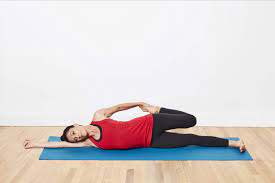
- The Lying Quad Stretch:
- You are lying in a face-down position & propping the head on the left hand.
- Alternatively, you can lie on the side to perform this stretch.
- After some seconds, pull the right foot toward the butt & bend the left knee joint to stabilize yourself.
- Then Hold onto your ankle joint & maintain this stretching position for 30 seconds.
- Repeat this Stretching exercise 3 times at 1 time & do the 3 times per day.
2. The Simple Quad Stretch:

- You are standing on your left leg & one knee joint touching the other.
- You can hold a chair & the wall to keep the steady if needed.
- Grab the right foot & use your right hand & pull it towards your butt.
- Must Be sure to push your chest up & hips joint forward.
- Try not to worry about pushing the foot too close to your backside.
- But your focus must be on feeling the stretch in your quad muscle & pushing your hip joint forward to get a good hip flexor muscle stretch.
- Hold this stretching position for 30 seconds.
- Repeat this Stretching exercise 3 times at 1 time & do the 3 times per day.
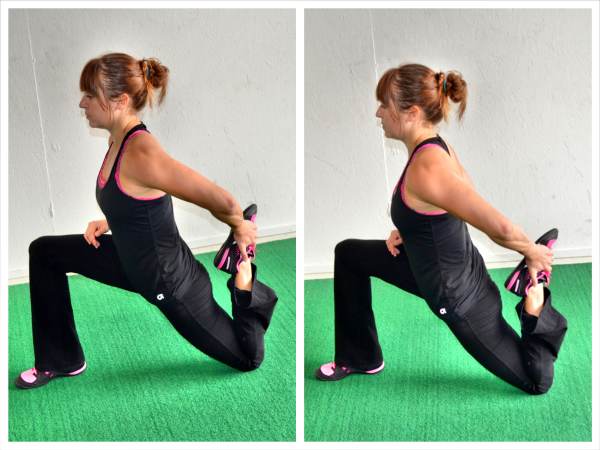
3. Vastus lateralis Stretch:
- This stretching exercise Start with a high lunge position, with the left foot forward.
- Then Carefully drop your right knee joint to the floor & take a moment the balance.
- When you are ready, reach back with your right arm & grab your ankle joint or toes.
- Hold this stretching position for 30 seconds but must keep the body steady.
- Then Gradually come back into the lunge position & opposite from the left foot to the right foot.
- Repeat this Stretching exercise 3 times at 1 time & do the 3 times per day.
Vastus lateralis muscle Strengthening Exercises:
- After the follow of electrotherapy & massage for 2 -3 days for release to muscle pain by physiotherapist then the therapist is advised to you strengthening exercise for release to muscle weakness.
- This strengthening exercise is always advised when you feel to release pain & when you feel comfortable.
This all-strengthening exercise helps you with muscle weakness & pain.
- Lying Pigeon Progression
- The Frog Pose
- Floor extension
- Lateral heel drop
- Step downs
- Leg extension
- Single leg raises
- Terminal knee extensions (TKEs)
- Vastus lateralis activation Exercise
- Ball Clench Extensions
- Twisted Leg Raise
- Ball Bridges
- Ball Wall Squats
- Isometric Contraction of the vastus lateralis muscle
- Seated Isometric vastus lateralis muscle & Adduction
- Externally Rotated ½ Squats
- Wall/Ball Squat
- Split Squats/Static Lunges
- Step-Ups

- Lying Pigeon Progression:
- In the first place, a mat on the floor & you are lying face down.
- Then must be Secure place a resistance band around the affected foot, with the excess band in a reachable area.
- Grab the band with the left hand & must keep the right leg extended or bend the left knee joint.
- Must keep your toes pointed toward the ceiling.
- Then use the resistance band to pull forward till you feel the stretch.
- Hold this exercise position for 10 seconds.
- Repeat this strengthening exercise 10 times in 1 time & do the 3 times per day.

2. The Frog Pose:
- This exercise is start by lying on your stomach means in a prone position & propping the torso up on your elbow joints.
- Bend both of your knee joints &, and reach back to hold onto your feet.
- You feel the stretching at this point.
- Then Adjust the fingers to point the same way as your toes, then carefully lift your elbow joint to point to the ceiling.
- Push the chest up as high as possible.
- This exercise is Stopped completely when you feel any pain in the hip or knee joint.
- Hold this exercise position for 10 seconds.
- Repeat this strengthening exercise 10 times in 1 time & do it 3 times per day.
3. Floor extension:
- You are sitting down on the floor with a tall posture.
- Your shoulder joint should be pulled down the back with your chest proud.
- Then Bend your left knee joint in toward your chest with your left foot flat on the floor.
- Extend your leg in front of you with your foot pointing slightly out to the side then.
- Hold under the left knee joint with both hands interlocked & must keep your muscle flexed for the duration of this exercise.
- Do the Exhale Without losing the posture & leaning away from the wall, lift the right leg in the air as high as possible.
- Hold this position for 10 seconds.
- Then Inhale & slowly lower down to your starting position.
- Repeat this strengthening exercise 10 times in 1 time & do the 3 times per day.
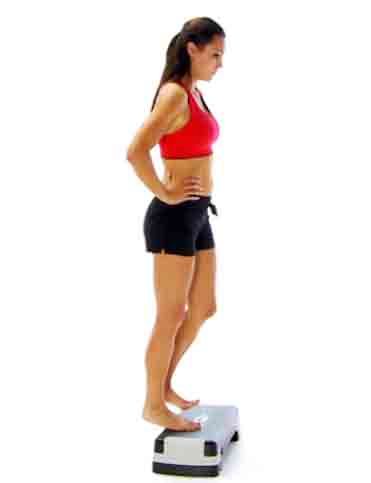
4. Lateral heel drop:
- You are standing tall with your left leg straight but not locked & your foot is resting on a small step.
- Do the right knee joint slightly bent & your left foot should be flat on the floor.
- Your right knee joint must be going over the toes.
- Then Squeeze your core muscle for balance.
- Exhale & push up off the right leg till both legs are fully straightened.
- Try to keep your hip joint level as you step up.
- Inhale then contract your left vastus medialis muscle & slowly return to your starting position.
- Hold this exercise position for 10 seconds.
- Repeat this strengthening exercise 10 times in 1 time & do the 3 times per day.
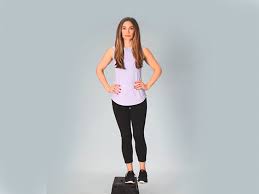
5. Step downs:
- You are standing with the right foot on the step & your left foot off to the side.
- Do the Inhale & Flex the vastus medialis muscle.
- Then bend your right knee joint till your left foot is flat on the floor.
- Must be Again, try to keep your hip joint level at all times.
- Do the Exhale & engage your core muscle.
- Then push off your foot & return to your starting position.
- Hold this exercise position for 10 seconds.
- Repeat this strengthening exercise 10 times in 1 time & do the 3 times per day.
6. Leg extension:
- You are sitting on a chair & scoot yourself to the front of the seat.
- Then Wrap a resistance band around your ankle joint & feed the band under the chair, which you reach back & grab with your hand.
- Do the Exhale & in one motion then slowly extend your leg to full extension out in front of you.
- Then do the Inhale & contract your muscle & slowly lower the leg back down to 30 degrees.
- Hold this exercise position for 10 seconds.
- Repeat this strengthening exercise 10 times in 1 time & do the 3 times per day.

7. Single leg raises:
- You are lying on the back with your knee joint bent & foot flat on the mat.
- Fully extend your right leg out in front of you must be placing an ankle joint weight on your thigh.
- Squeeze your core muscle &contract the vastus medialis muscle & lift the right leg about 2 inches off the mat.
- Must Keep elevated the leg duration of this exercise.
- Make sure you are not arching your back.
- You do not put any space between the back & the mat.
- Hold this exercise position for 10 seconds.
- Repeat this strengthening exercise 10 times in 1 time & do the 3 times per day.
10. Terminal knee extensions (TKEs):
- You Tie a resistance band around a sturdy anchor & slide the other end up to slightly above the back of your right knee joint, facing the anchor.
- Step back till the band is taut.
- Then Straighten your left leg & must keep your right knee joint slightly bent.
- Do the Exhale & push your right knee joint back to match your left knee joint & exaggerate the contraction in your vastus medialis muscle.
- Hold this exercise position for 10 seconds.
- Repeat this strengthening exercise 10 times in 1 time & do the 3 times per day.
11. Vastus lateralis activation Exercise:
- You are sitting upright in a chair, with your knee joint bent.
- Place the ball between your knee joint & your feet flat on the floor.
- Then Place your thumbs on the soft, squashy area on the inner side of the knee joint, just above your kneecap – patella & press down firmly
- Then Clench your glutes & gently squeeze the ball.
- Make sure the movement comes from your knee joint rather than the inner thigh.
- If you do not feel strech must be, try clenching your buttocks, clenching your knee joint & squashing the backs of your thighs down into the chair
- Hold this exercise position for 10 seconds.
- Repeat this strengthening exercise 10 times in 1 time & do the 3 times per day.
12. Ball Clench Extensions:
- You are lying on your back with a rolled-up towel underneath your knee joint & place the ball between your knee joint.
- Then Clench your buttocks & gently squeeze the ball & lift one heel off the ground till the knee joint is straight.
- Must be Keep clenching the ball & hold for 10 seconds then slowly return to starting position.
- Repeat this strengthening exercise 10 times in 1 time & do the 3 times per day.
13. Twisted Leg Raise:
- You are lying on your back with one leg stretched out straight & the other knee joint bent.
- It takes the tension off the lower back as you work the straight leg.
- Turn your foot outwards about 20 into external rotation & lift the foot till your thighs are parallel.
- Hold this exercise position for 10 seconds.
- Repeat this strengthening exercise 10 times in 1 time & do the 3 times per day.
- Must be Keep the leg turned outwards in this exercise which is helpful to you activate the vastus medialis muscle.
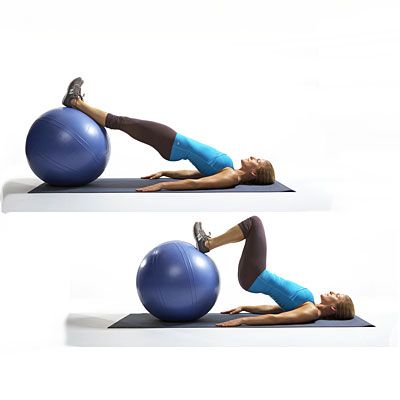
14. Ball Bridges:
- You are lying on your back with your knee joint bent, feet are hip distance apart.
- Place the ball between your knee joints.
- Then Clench your glute muscles & gently squash the ball.
- Lift your bottom as high as possible without arching your back.
- Hold this exercise position for 10 seconds.
- Repeat this strengthening exercise 10 times in 1 time & do the 3 times per day.
15. Ball Wall Squats:
- You are standing with your back against a wall & squashy ball between your knees joint.
- Must be placed heels about 6? away from the wall & toes are pointing forwards.
- Clench your glutes muscle & gently squash the ball to activate the vastus medialis muscle then slowly slide down the wall, & bending your knee joint.
- Hold this exercise position for 10 seconds.
- Repeat this strengthening exercise 10 times in 1 time & do the 3 times per day.
16. Isometric Contraction of the vastus lateralis muscle :
- You are Sitting position on your bed & floor with the legs out straight & place a towel underneath your knee joint.
- Flex your quads muscle with the hip joint /leg slightly externally rotated.
- Hold this contraction for 10 seconds & place your fingers on your VMO to ensure your vastus medialis muscle is activating & firing.
- Repeat this strengthening exercise 10 times in 1 time & do the 3 times per day.
- Seated Isometric vastus medialis muscle & Adduction:
- You are sitting on a chair & platform where your feet hang freely.
- Place a ball between your thighs & squeeze the ball together activating your vastus lateralis muscle.
- Hold this muscle contraction for 10 seconds.
- Repeat this strengthening exercise 10 times in 1 time & do the 3 times per day.
17. Externally Rotated ½ Squats:
- You are standing with your legs shoulder-width apart with the knee joint & feet are externally rotated.
- Squat halfway down & come up nice & slowly which is focusing on activating the vastus medialis muscle to bring you back up to a standing position.
- Repeat this strengthening exercise 10 times in 1 time & do the 3 times per day.
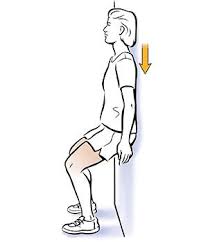
18. Wall/Ball Squats:
- You are placing a Swiss ball on your back against the wall.
- Then Slowly squat down into a near-seated position so that your thighs are parallel with the ground.
- Slowly come back up & avoid locking your knee joint.
- Repeat this strengthening exercise 10 times in 1 time & do the 3 times per day.
19. Split Squats/Static Lunges:
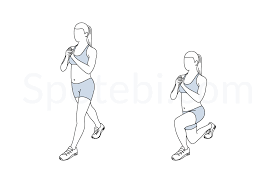
- This exercise is to Start with your feet shoulder-width apart & take one large step forward.
- You can place your hands on your hip joint.
- To make this exercise harder must hold dumbbells by your side.
- With an upright posture, lunge down & up without your knee joint at the front moving in front of your big toe.
- But Focus on putting most of the weight through your front heel &don’t let your knee joint buckle in.
- Repeat this strengthening exercise 10 times in 1 time & do the 3 times per day.

20. Step-Ups:
- You are Standing in front of a bench & chair.
- Step up onto a platform & drive from the gluteal muscle, not from your toe.
- Ensure your knee joint is not buckling inwards.
- It is forced/pushed out.
- Then Slowly step down making sure your knee joint is stable.
- Repeat this strengthening exercise 10 times in 1 time & do the 3 times per day.
FAQ
The muscle is one of the 4 quadriceps muscles & is the largest muscle in that group. The vastus lateralis work with the other quadriceps muscles to help extend the knee joint. It also is active in maintaining thigh & kneecap positions while walking & running.
The vastus lateralis muscle is situated on the lateral side of the thigh. This muscle is the largest of the quadriceps which includes: the rectus femoris, vastus intermedius, & vastus medialis.
Muscle Tightness: tightness in vastus lateralis pulls the kneecap slightly sideways which affects how it glides up & down resulting in knee cap pain. Muscle Strain: over-stretching or over-loading of the muscle causes tears in the muscle fibers & quads strain.
Applying Ice to the affected part can help reduce inflammation & pain. Try applying ice for 10 to 15 minutes once or twice a day. Compression prevents additional swelling, so lightly wrap the injured part in a soft bandage or ace wrap. Elevation minimizes swelling.
Slide the palm distally onto the lateral thigh. Palpate the oblique fibers of the vastus lateralis anterior & posterior to the iliotibial band. Resist as the client gently extends the knee to ensure the location.

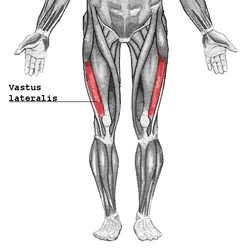
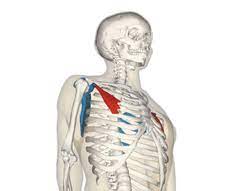
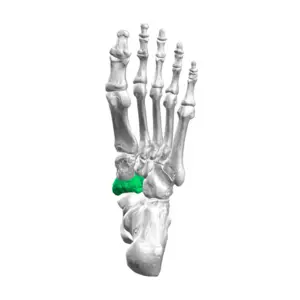
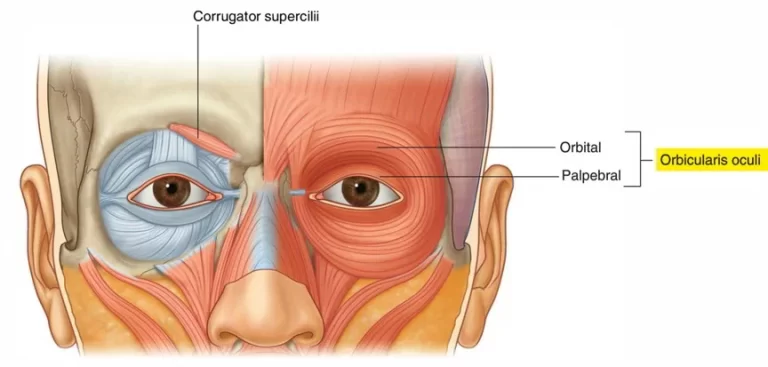
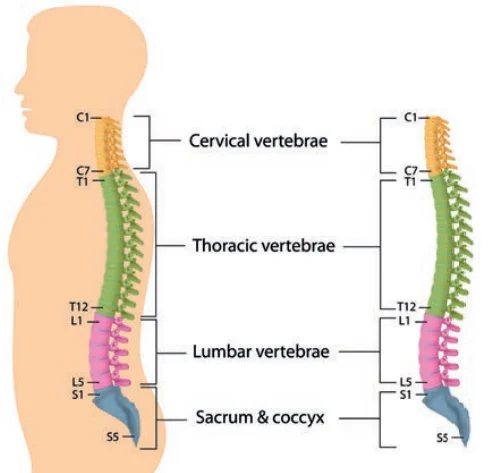
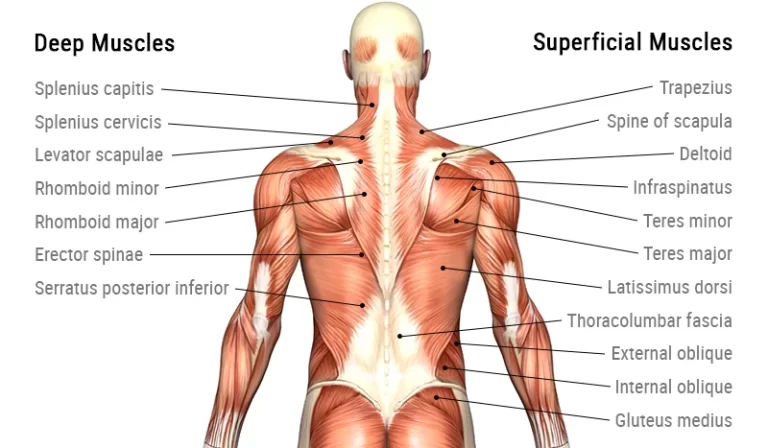
2 Comments